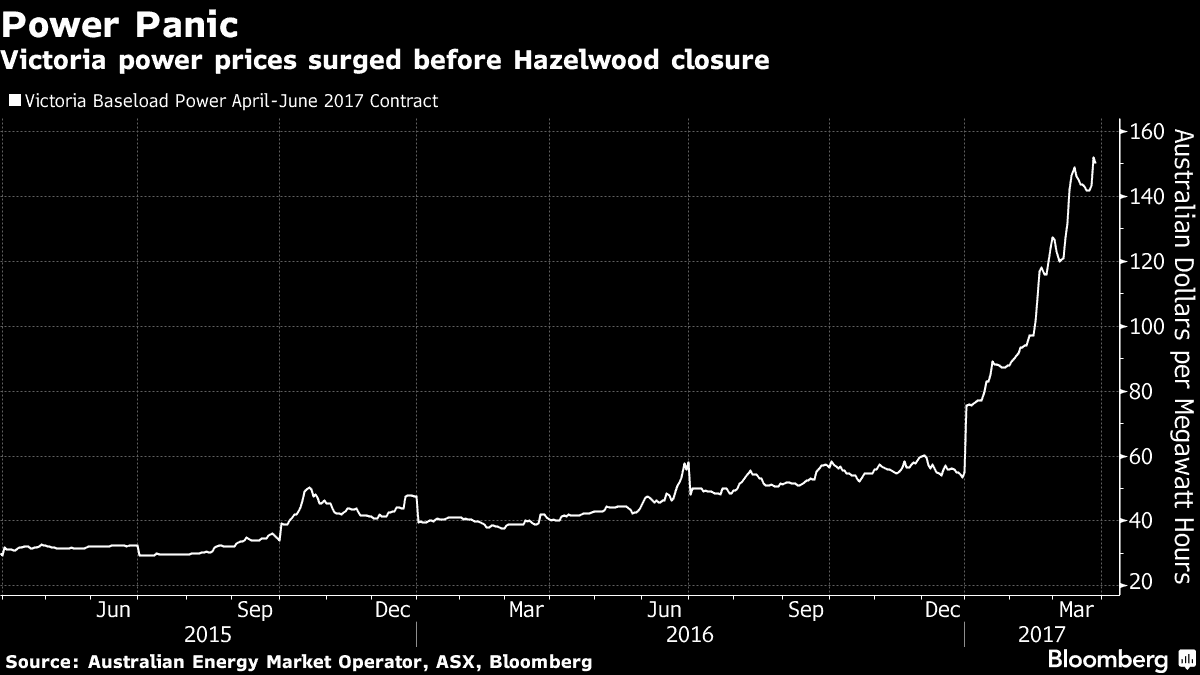After over 50 years of service, the Hazelwood shutdown will finally be completed today . Hazelwood, the Engie and Mitsui owned power plant operated at 1600 megawatts and was a brown (‘dirty’ coal) fired plant, is located in Victoria and supplied almost 25% of the state’s energy (and about 5% nationwide).
This has led to a steady surge in energy futures for the April-June quarter (over 300% in the past year) as per data from the AEMO (Australian Energy Market Operator)
Melbourne analyst for UBS, Nik Burns, wrote in a report this week that the energy market is “…struggling to absorb the potential impact of the closure on future electricity prices” which is leading to “increased volatility”. As the graph below shows Australia’s already struggling power and energy market have reacted with steadily increasing panic to the situation:

Federal Energy Minister Josh Frydenberg has previously said that Victoria could import energy from NSW and Tasmania (coal-fired and hydro generated, respectively) – and according to SMH, and Australia’s electricity grid operator over the next two years there is a prediction of 72 days of high demand conditions/possible power supply shortfalls if next summer is even close to as hot as predicted. As previously highlighted, the plant supplied a massive 25% of Victoria’s power and the 72 days of potential power “reserve shortfall” – which doesn’t necessarily mean blackouts, but certainly shows how reliant the state (along with SA who have myriad similar woes) will be on imported power over the coming months following the Hazelwood shutdown.
However, investigating the situation further it may not be as bad as that sounds – these predictions are based on ‘extreme demand scenarios’ – which refers to the assumption of ‘once in a decade’ electricity usage. A scenario like this is possible for days and even weeks over the next couple of years, but 72 days seems extreme at best. Dylan McConnell from the University of Melbourne said “If there’s a 45-degree day, or three 45-degree days in a row, or a generator fails you could have demand at that level and get a shortfall in Victoria, but it’s not going to happen 72 times in two years,”. Grattan Institute energy program director Tony Wood agreed that the electricity supply was unlikely to be interrupted in summer 2018/19.
“The most likely outcome at the moment is that we will get through this,” Mr Wood said.
Regardless, Australia’s transition to a clean energy remains fraught with uncertainty (apart from the seemingly inexorable price hikes). With the $2billion Snowy Mountain expansion “Snowy Hydro 2.0” still years away (the feasibility study should be completed by the end of the year) we face a few interesting years as we try to balance reaching our 2030 renewable goals and keep energy on while minimising blackouts and load shedding across the country.

